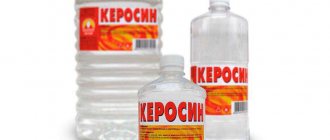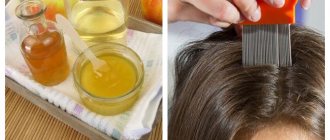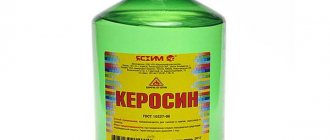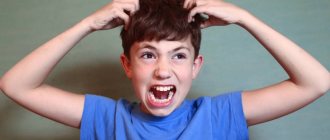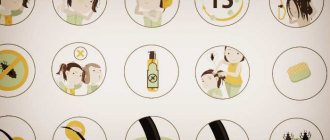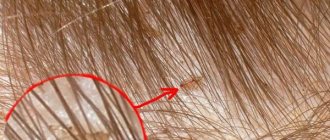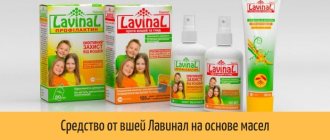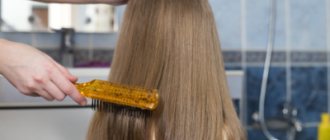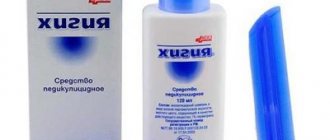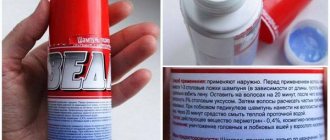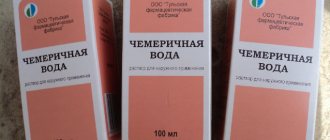Pediculosis brings many troubles and disorders to the physiological and living standards of people. Pharmacology and medicine are developing intensively, and new drugs against blood-sucking insects are appearing. Many different remedies have already been invented, but there are proven recipes, such as removing lice using kerosene. It is known that grandparents, who perfectly remember Soviet times, at the first symptoms of lice, removed them with kerosene. You will learn how kerosene works against lice and nits in our article.
Causes of lice
The main reason for lice infection is close contact with other people. This type of insect cannot fly, but moves quickly in search of a new habitat. For this reason, children who come into close contact with each other during games and activities are at risk.
There is a certain risk of becoming infected with lice on public transport, in crowded places. Infection can occur when using other people's things: hats, combs, hair clips. To avoid infection, you should not lie down on a pillow after other people without changing your pillowcase and bed linen.
The causative agent of pediculosis
A parasitic disease that affects the skin and hair, the causative agent of which is a louse that feeds on human blood, is called pediculosis or lice.
Pediculosis is transmitted by contact
There are head lice, body lice and pubic lice. They differ in the location of the parasites. Head lice, as the name suggests, live on the head, but with a severe infestation they move to the beard, eyebrows and mustache. Clothes, living on clothing, suck blood from all areas of the skin available to them, and pubic ones live in the intimate area, under the armpits.
This is interesting. Pubic lice do not spread to the head, since the peculiarity of the structure of their legs makes it possible to cling only to hair of a triangular cross-section.
Life cycle of lice
The insect species described live on average about 30–35 days. During this time, the female lays up to 150 nits. These oval-shaped yellowish-white seeds-like eggs of head and pubic louse are located at the root of the hair, to which they are attached with a special secretion secreted by the gonads of the adult. Therefore, they cannot be washed off with ordinary water and soap; nit removers must be oily. The louse breathes through 14 holes located on the sides of its body, which close upon contact with water, protecting the parasite from death. Thus, a means for killing insects and nits must act comprehensively.
Getting rid of nits that are firmly glued to the hair is much more difficult than getting rid of larvae and adults.
Does kerosene help in the fight against lice?
Since kerosene is very toxic, it actually kills parasites. But at the same time, it can penetrate into scratches on the scalp and have a negative effect on the human body. Moreover, this method is very dangerous due to the fact that kerosene is highly flammable. In world practice, since 1989, at least nine cases of burns of children during kerosene treatment have been recorded. These tragedies apparently occurred because, contrary to popular belief, it is the kerosene vapor that is flammable, not the liquid itself. Kerosene vapor can ignite due to the presence of even the smallest spark. All it takes is a stray spark from a lighter or electrical appliance.
Considering that nits are very reliably protected by a thick shell, treatment with kerosene is not always effective - most eggs are not destroyed. Nits breathe less intensely than adult parasites, so the poison does not affect them as strongly. This means that the treatment procedure will need to be repeated until the last lice hatches from the nits. This significantly increases the risk of poisoning the body with toxins, especially when it comes to treating lice in children. Being a powerful toxin, kerosene greatly irritates the scalp, so cases of dermatitis are common after such treatment.
Possible consequences
Even if the instructions are strictly followed, malaise, skin irritation, and other negative consequences may occur.
Before using a folk remedy, you need to evaluate the pros and cons. It may be better to abandon the idea and choose a more effective, less dangerous drug.
Cooking recipe: how to properly dilute kerosene
If you do not have the slightest opportunity not to use this rather dangerous method of treatment, it will be useful to know how to use kerosene for lice and nits. To reduce the harmful effects on the skin, kerosene is mixed with any vegetable oil in a ratio of 1:10
There is another popular recipe. It is used to remove lice from both adults and children. To achieve an antiparasitic effect, you need to mix all the components correctly. Take one tablespoon of kerosene, add the same amount of shampoo and mix thoroughly. Then add two tablespoons of olive or sunflower oil. The anti-lice composition is ready for use.
How to treat your head and how long to hold it?
Apply the composition to your hair and lather lightly, then cover your head with a plastic bag. How long do you keep the composition on your hair? For an adult – at least an hour; for a child, 15 minutes is enough. After the specified time, the hair must be rinsed with warm water and shampoo. After this, you need to take a fine-tooth comb and comb out the nits from wet hair. The comb can be dipped in vinegar to make it easier to separate the nits from the hair. The treatment procedure must be carried out every three days until the parasites completely disappear.
Precautions when using kerosene for lice
If you decide to use kerosene to remove lice, you should take into account the existing risks. Despite the popularity of kerosene as a traditional medicine, it poses a health hazard. Inhaling its vapors causes dizziness, nausea, and increased excitability. Exposure to kerosene provokes redness, and in large quantities even chemical burns of the skin.
In order to avoid consequences, you must:
- • use kerosene in combination with vegetable oils or shampoo;
- • protect your eyes when rinsing
- • eliminate the risk of inhaling product vapors;
- • apply the product using cotton swabs;
- • do not use kerosene to remove lice from children;
- • if a strong burning sensation occurs, wash off the product immediately.
Brief description of the substance
A mixture of flammable hydrocarbons is obtained during the oil refining process. A yellowish liquid, transparent consistency, with a pungent odor is formed. The substance, due to its high flammability, gained widespread use during the last century. Kerosene was used for lighting, cooking, manufacturing, and as rocket fuel.
The range of applications is not limited to this. Kerosene began to be actively used to combat various pests, including insects. Pediculosis is the scourge of all centuries, forcing us to look for new effective means to get rid of lice. At that time it turned out to be kerosene.
On a note!
The reason for its widespread use against lice was its availability - the substance was available in every household. And also an affordable price. Kerosene is several times cheaper than professional remedies for head lice.
Contraindications to the use of kerosene
Kerosene is not recommended for use if there are various injuries on the skin - wounds, scratches, burns. This will only worsen the condition of the skin. The product is contraindicated for use by children, as well as on excessively dry and sensitive skin.
Another contraindication is the risk of developing allergic reactions. Testing is required before use. A small amount of kerosene is applied to the bend of the elbow and wait a few minutes. If redness and itching appear, you should not use kerosene.
Other folk remedies for lice
Before you remove lice with kerosene, it would be a good idea to learn about other, less dangerous methods that can be used at home. Despite the fact that in most cases the effectiveness of folk remedies has not been scientifically proven, recipes are still passed down from generation to generation. The most popular of them are:
- • Apple vinegar. This remedy is mainly used to combat nits. The acid in vinegar breaks down the glue that lice use to attach nits to hair. Apple cider vinegar is mixed with water and applied to the hair, after which it is combed out with a fine comb. To enhance the effect, you can cover your head with a plastic bag for 10 minutes.
- • Mayonnaise. The essence of this method is to deprive the lice of the ability to breathe. To achieve the effect, mayonnaise must cover the entire scalp and hair along the entire length. You need to keep it for at least several hours, and preferably throughout the day. Then the hair is washed with shampoo and the lice are combed out with a comb.
- • Vinegar with mayonnaise and tea oil. When you mix regular oil with vinegar, it quickly decomposes, so there are folk recipes in which the oil is replaced with mayonnaise. The antiparasitic effect of this mixture is enhanced by tea oil. Mayonnaise is mixed with vinegar in the following ratio: two tablespoons of mayonnaise to one tablespoon of vinegar. Add a few drops of tea tree oil to the finished mixture.
- • Essential oils. Lavender, coconut, anise, jasmine, eucalyptus and tea tree oils have insecticidal activity. In addition, lice cannot tolerate their smell. To get rid of parasites, mix a few drops of essential oil with a tablespoon of olive oil. The resulting mixture is rubbed into the hair and scalp and left for 30-40 minutes. To increase the healing effect, you can add essential oil to shampoo every time you wash your hair.
- • Garlic. The head of garlic should be thoroughly chopped and then mixed with half a liter of hot water (but not boiling water). The composition must sit for at least 8 hours. After this time, the liquid is filtered and poured into a spray bottle. The infusion is sprayed onto the hair along the entire length, after which the head is covered with polyethylene. The mixture must be kept for at least 6-8 hours.
Is tar effective in its pure form?
The concentration of substances that remove lice in it is much higher than in soap.
Yes, it can be used, but not in its pure form, as this leads to the formation of dangerous burns on the skin, but in the form of an aqueous solution in a ratio of 1 to 5 or 1 to 4 (15-20%).
All previously stated rules of use regarding soap with it remain relevant (pre-washing your hair, applying for 30-60 minutes and then combing out), and its possible side effects.
Although tar is included in various ointments (for example, Vishnevsky ointment), they should not be used, since, unlike the cost, their effectiveness in the fight against lice is no higher than that of soap.
How to quickly get rid of lice and nits using Paranit?
Home remedies for lice are certainly attractive because the ingredients for the treatment are available in almost every home. However, they have a significant drawback - low efficiency, and in the case of kerosene, also high toxicity. And lice is such an unpleasant problem that you want to quickly forget about once and for all, so it is better to use a proven and effective remedy.
Anti-pediculosis products "Paranit" have a double effect, quickly and effectively getting rid of lice and nits. They are very easy to use as they are insecticide-free and formulated with mineral oil and dimethicone. “Paranit” products can be used to treat children from 1 year of age, pregnant and lactating women.
Many people who experience head lice are surprised to realize that most remedies do not work on them. The reason for this lies in the fact that parasites quickly develop resistance (resistance) to many insecticidal agents. “Paranitis” does not have a neurotoxic, but a physical effect on insects. It blocks the breathing of lice and nits, and also leads to their dehydration. As a result, the parasites die in just 10-20 minutes. The product can be freely used several times if necessary - lice do not become resistant to it.
By using Paranit, you can be sure that this remedy will quickly and safely rid you or your child of unpleasant “tenants”.
Drug price
It is impossible to say with certainty who should treat these pests and how many times. This is purely individual. Moreover, it is better and safer to get rid of lice with a mixture of kerosene, for example, with shampoo, this leads to the fact that even for a full course of treatment (this usually lasts several days), it is enough to purchase 0.5–1 liter.
However, 1 glass of liquid is enough for the entire course of treatment. Only technical liquid is used for medical procedures. When using another (automotive or aviation) you can cause serious irreparable harm to your health. In addition, it may contain foreign additives, which will greatly increase its aggressiveness.
You can buy it in any hardware department. The average cost in the country is from 37 to 100 rubles. It depends on the brand, container and manufacturer. In any case, this is the cheapest remedy for getting rid of lice. You just need to treat carefully and correctly.
Lice prevention
There are no specific measures to prevent head lice. The following measures will help reduce the risk of infection:
- • maintaining a safe distance when communicating, teaching children this rule;
- • compliance with personal hygiene rules, regular hair washing;
- • examination of the scalp of a child attending kindergarten or school;
- • regular change and washing of underwear and bed linen;
- • girls with long hair are recommended to braid their hair or put it in a ponytail;
- • Applying 2-3 drops of tea tree oil behind the ears before going out into a public place helps repel insects.
If lice have been identified in one family member, it is advisable to treat the heads of all other household members to prevent re-infection.
Prevention of lice infestation in children's institutions involves regular examination of children by a medical professional. Inspection is required after summer holidays and long holidays. If lice are detected, the child is isolated and not allowed into the kindergarten or school until the pests are completely eliminated.
